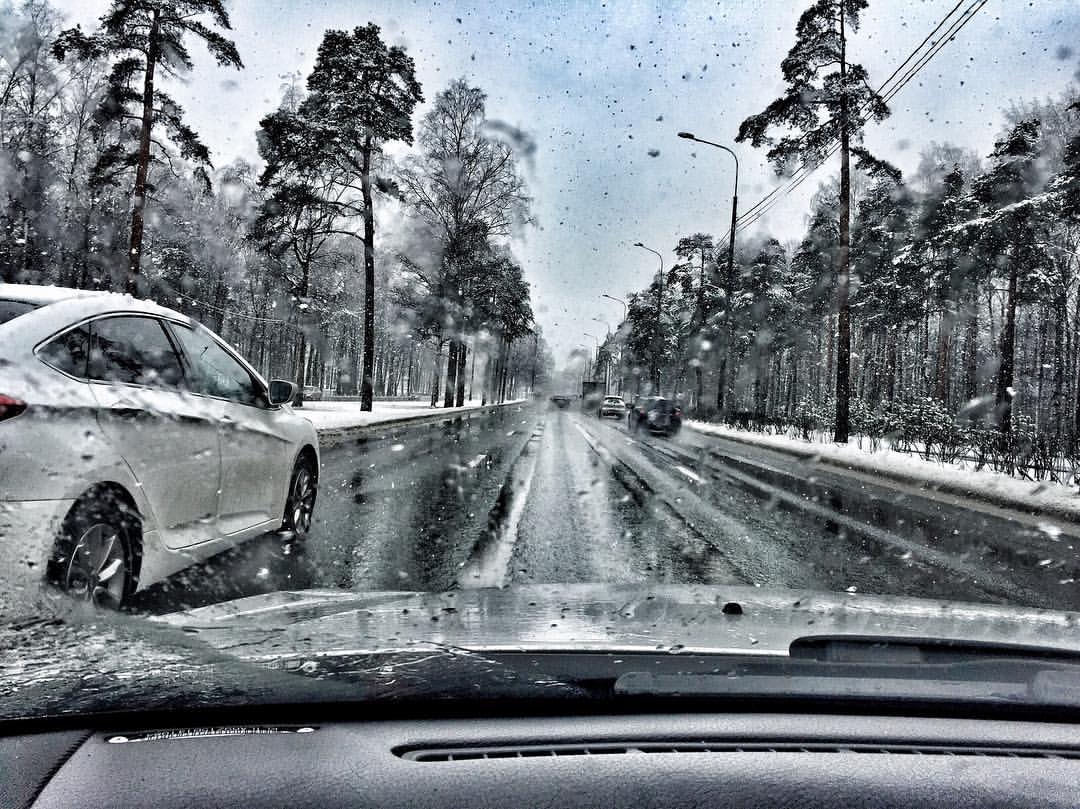Severe weather can strike at any time of the year. Being a cautious driver can mean the difference between getting home safely and standing alongside the road waiting for a tow truck. While we all have auto insurance, it is best never to have to use it.
The following tips are suggestions to protect yourself and your vehicle.
Ice and Snow

Wintertime often brings ice and snow. These conditions cause driving challenges for most of us, but we can practice safer driving following a few key tips.
Take the time to properly deice and clean your windows. An extra five minutes spent defrosting and scraping your windows will improve your road vision, enabling you to use defensive driving skills.
Once on the road, keep your speed slow and consistent. In deep snow, travel at a speed fast enough to keep your momentum going, but slow enough to maintain control of the vehicle. Slow down before crossing bridges and overpasses, where ice may accumulate and avoid sudden changes in speed or direction.
Braking in winter weather should be slow and deliberate. Braking too quickly or too abruptly may cause your brakes to lock up, causing you to lose steering capability. Anti-lock brakes will keep you from losing steering control in a quick braking situation. To engage anti-lock brakes, push the pedal to the floor and hold—do not pump—the brakes. (Ice and snow do not change this process. Push and hold the brake pedal on the floor to avoid losing steering control.)
If these safety tips fail and you find yourself stuck in the snow, straighten your wheels and accelerate slowly. Try to avoid spinning your tires and, if necessary, use sand or gravel under the wheels for added traction.
Fog
In foggy conditions, stay on the right side of the road and turn on your low-beam headlights. If you cannot see the edge of the road, it may be safest to pull off the road until visibility improves. However, make sure to pull to the far right, out of the traffic lane, and turn on your hazard lights.
Wind & Rain
Wind and rain pose special challenges for drivers. If you have a high-profile vehicle such as a trailer or motor home, consider staying off the roads until the winds die down. These vehicles tend to be overtaken by strong gusts of wind, posing real danger for drivers.
The commencement of rain is the most dangerous time to be on the road, as water mixes with road oils and dirt, creating a slick surface. Avoid hydroplaning by slowing down and maintaining traction between your tires and the road surface. Turn on your lights so other drivers can see your vehicle, and use your defroster or air conditioner to improve your visibility.
Severe thunderstorms can spawn tornados and hail. Monitor your radio news station during these conditions. The safest place to be in case of a tornado is outside the car. Pull over and find a ditch or other low-lying area and lie face down to protect yourself from flying debris. In a hailstorm, pull under an overpass or bridge to seek shelter while driving. In a hurricane, head inland to high ground before the storm approaches land.
Following these severe weather driving tips will protect you from sliding off the road, having an accident, or suffering even greater damage to yourself and your property in unfavorable weather conditions.
